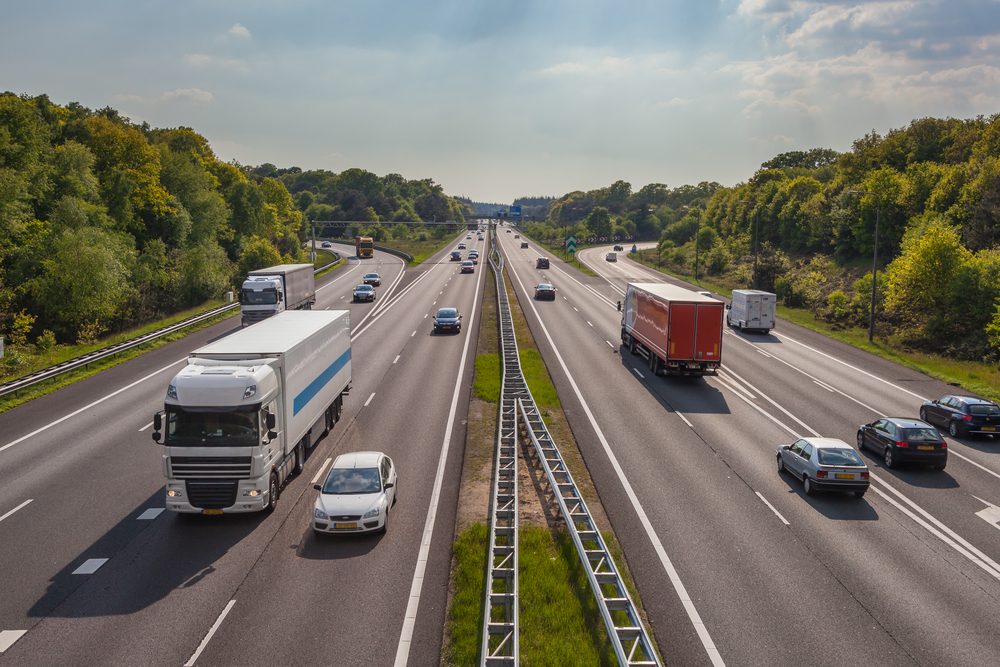Safety should always be a top priority when it comes to sharing highways with large trucks and buses. Understanding and practicing safe driving techniques to navigate the roads alongside these massive vehicles is crucial. Large trucks and buses’ size and weight pose unique challenges on the road, which can result in accidents and severe consequences for those involved.
At Lasky Justus Law, we advocate for the rights of individuals involved in personal injury and auto accidents. We recognize the importance of raising awareness about safe driving practices, so in this article, we will provide you with essential tips for safe driving with large vehicles on the road.
Understanding the Challenges of Sharing Highways With Trucks & Buses
When sharing highways with large vehicles, drivers must understand potential challenges to ensure safety on the road. Large vehicles, such as trucks and buses, have limited visibility with blind spots, making it difficult for their drivers to see smaller vehicles and obstacles. Additionally, large vehicles require longer stopping distances due to their size and weight, making sudden braking more hazardous.
Tip #1: Give Large Vehicles Space & Maintain Safe Distances
Drivers should have enough room to allow large vehicles to maneuver safely. Tips for maintaining space include avoiding tailgating and refraining from abruptly changing lanes near large vehicles. Tailgating can be extremely dangerous as it reduces your visibility of the road ahead and limits the truck or bus driver’s ability to react quickly. Abrupt lane changes can also startle significant vehicle drivers and lead to accidents. By giving large vehicles the space they need, you can help prevent potential collisions and ensure a safer driving experience for everyone on the road.
Tip #2: Understand How to Safely Pass Trucks & Buses
When overtaking large vehicles on highways, it is important to follow specific guidelines to ensure everyone’s safety. Signaling your intention to change lanes in a timely manner helps communicate your actions to the truck driver, allowing them to anticipate your move. Maintaining a steady speed while passing is vital to avoid surprising the truck driver. Additionally, give yourself enough room to return to the original lane after overtaking, as cutting too close can be dangerous. A helpful tip from the Department of Transportation is to avoid passing trucks and buses on a downgrade. When going downhill, trucks and buses tend to pick up speed.
Tip #3: Respect Large Vehicle Blind Spots

Understanding large vehicle blind spots, also known as “no-zones,” is essential. These “no-zones” are areas where truck or bus drivers have limited visibility. To avoid them, stay out of the blind spots, which typically include the sides of the vehicle, directly behind, and a significant distance in front. To ensure you are always visible to the truck driver, maintain a safe following distance and use your mirrors to check their mirrors.
Tip #4: Anticipate Wide Turns & Slow Acceleration
Anticipating wide turns and slow acceleration from trucks and buses is crucial to ensure safety while sharing the road. When encountering large vehicles, giving them extra space and preparing them for their wider turns is important. Stay focused and be mindful of their signal usage, as truck drivers may signal a turn earlier to allow for longer vehicles. Understanding and responding to their signals is essential – when a truck or bus signals an intention to change lanes or merge, be patient and give them room.
Are you in need of an auto-accident attorney dedicated to your case? Reach out to Lasky Justus Law to schedule a consultation.
Tip #5: Practice Patience & Avoid Aggressive Driving Behavior
Aggressive driving, such as tailgating, abrupt lane changes, or cutting off large vehicles, can have serious consequences. An aggressive driver’s actions can startle or intimidate truck drivers, leading to loss of control or delayed reaction times. Large vehicles’ sheer size and weight make them less maneuverable, increasing the risk of accidents and fatalities. By staying calm and patient and avoiding aggressive behavior, we can promote a safer driving environment for everyone, reducing the potential for accidents.
What Should You Do In Case of an Emergency?
In an emergency involving a large vehicle like a truck or bus, staying calm and acting quickly is crucial. First, maintain a safe distance to allow the driver ample space to react. Try to pull over and park in a safe location to avoid a potential collision. Contact emergency services to report the situation, providing them with accurate information and your location. Avoid making sudden movements and stay alert to the movements of the large vehicle.
If You’re Involved in an Accident, Contact Lasky Justus Law Today
If you’ve been involved in an accident, seeking legal representation from a firm specializing in personal injury and auto accidents like Lasky Justus Law is crucial. Experienced attorneys can navigate the legal complexities and help you recover fair compensation. This is especially important in cases involving large trucks or buses. While practicing safe driving is expected, especially with these helpful tips, accidents can still happen.
Based in Savannah, GA, Lasky Justus Law helps clients throughout Georgia and South Carolina. Don’t hesitate to contact us today.

